All you need to know about Ciba
Updated: 2016-02-04 08:46
By Yang Jie(chinadaily.com.cn)
|
||||||||
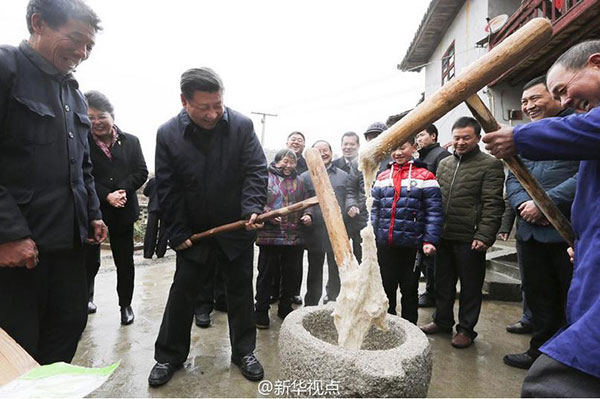
As the annual Spring Festival or Chinese New Year approaches, President Xi Jinping paid a three-day visit to East China's Jiangxi province.
The tour took Xi to Ji'an, Jinggangshan and Nanchang, where he visited villages, enterprises, schools, local communities and revolutionary base museums, and extended holiday greetings to all citizens and military personnel.
Besides, President Xi also made Ciba, a local festive snacks, with residents. If you don’t know what Ciba is, here is a handy guide.
President Xi pounds cooked glutinous rice to make Ciba with local villagers in Jiangxi on his three-day visit to the eastern province. [Photo/Xinhua]
What is Ciba?
It is a sticky traditional Chinese snack made with cooked glutinous rice paste. It may take the shape of balls or cakes with various seasonings.
When do people eat it?
Traditionally, Ciba is served at festivals, especially Spring Festival. Ciba can be served whenever there are guests at home.
Where is it popular?
It is popular mostly in South China including Guangdong province, Guangxi Zhuang autonomous region, Guizhou province, Sichuan province, Hunan province and Hubei province.
There are similar foods in Japan, South Korea and other places, but preparation and eating methods are slightly different.
What does Ciba symbolize?
Most Ciba are round, meaning reunion, and making Ciba cakes is often a collective activity which requires the cooperation of many people from a big family or several families. Therefore, Ciba cakes often represent family reunion and good luck in the New Year.
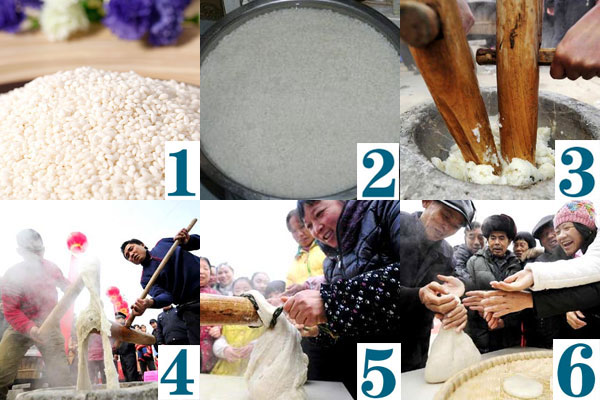
How to make it?
Follow these steps to make Ciba.
1. Process high grade glutinous rice, preferably red glutinous rice with thin shells, into glutinous rice flour.
2. Soak the glutinous rice in water thoroughly and then steam it in a wooden pot.
3. Grind the glutinous rice with a pestle and mortar, which gives the name "pounded Ciba".
4. After several rounds of hard pounding, divide the rice dough into dozens of egg-sized rice balls or cakes.
5. Put fried rice, peanuts, sesame seeds, brown sugar and other seasonings on the balls or cakes to produce a sweet, delicious taste and smooth texture.
- Australian police suspect overseas hackers behind threats to schools
- EU reform proposals show 'real progress': British PM
- Mainland Chile confirms first 3 cases of Zika virus
- Lanterns decorate temple to celebrate Chinese New Year in Kuala Lumpur
- Tusk to publish proposal for UK-EU settlement
- Cuba's Castro pays historic visit to France

 China's 'Moon Walker' sends back stunning HD photos
China's 'Moon Walker' sends back stunning HD photos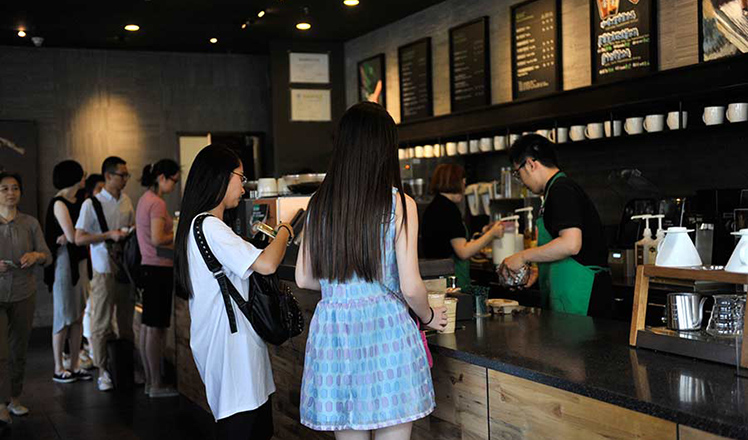
 Starbucks, office rents and CEOs form alternative outlook on China
Starbucks, office rents and CEOs form alternative outlook on China
 China's most beautiful wetlands
China's most beautiful wetlands
 Premier Li takes Spring Festival greetings, and gifts, to old folk
Premier Li takes Spring Festival greetings, and gifts, to old folk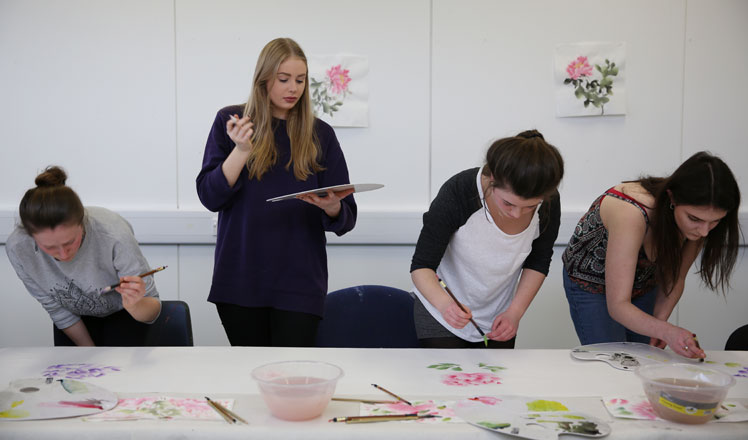
 International friendship blossoms in peony painting
International friendship blossoms in peony painting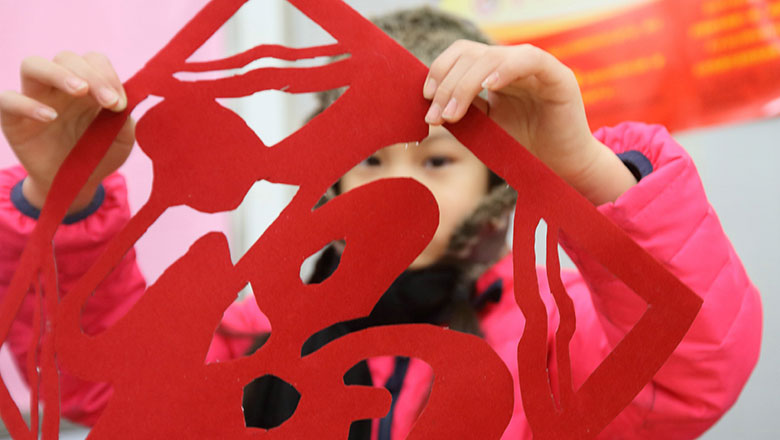
 Culture Insider: Little New Year
Culture Insider: Little New Year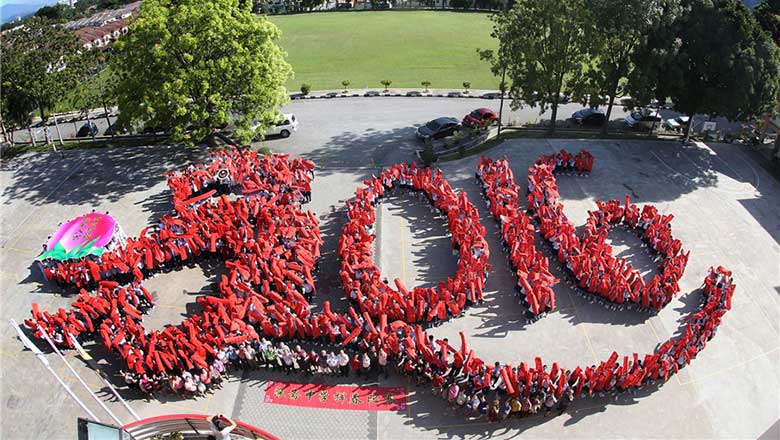
 Global celebrations mark Chinese New Year
Global celebrations mark Chinese New Year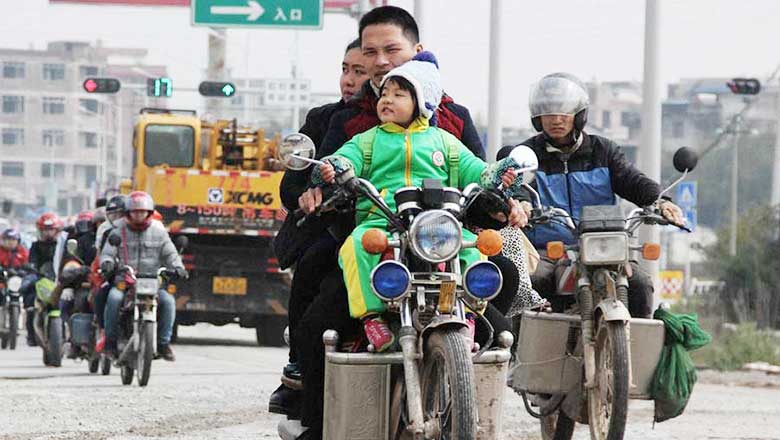
 Motorcycles ride home for Spring Festival reunion
Motorcycles ride home for Spring Festival reunion
Most Viewed
Editor's Picks

|

|

|

|

|

|
Today's Top News
National Art Museum showing 400 puppets in new exhibition
Finest Chinese porcelains expected to fetch over $28 million
Monkey portraits by Chinese ink painting masters
Beijing's movie fans in for new experience
Obama to deliver final State of the Union speech
Shooting rampage at US social services agency leaves 14 dead
Chinese bargain hunters are changing the retail game
Chinese president arrives in Turkey for G20 summit
US Weekly

|

|








